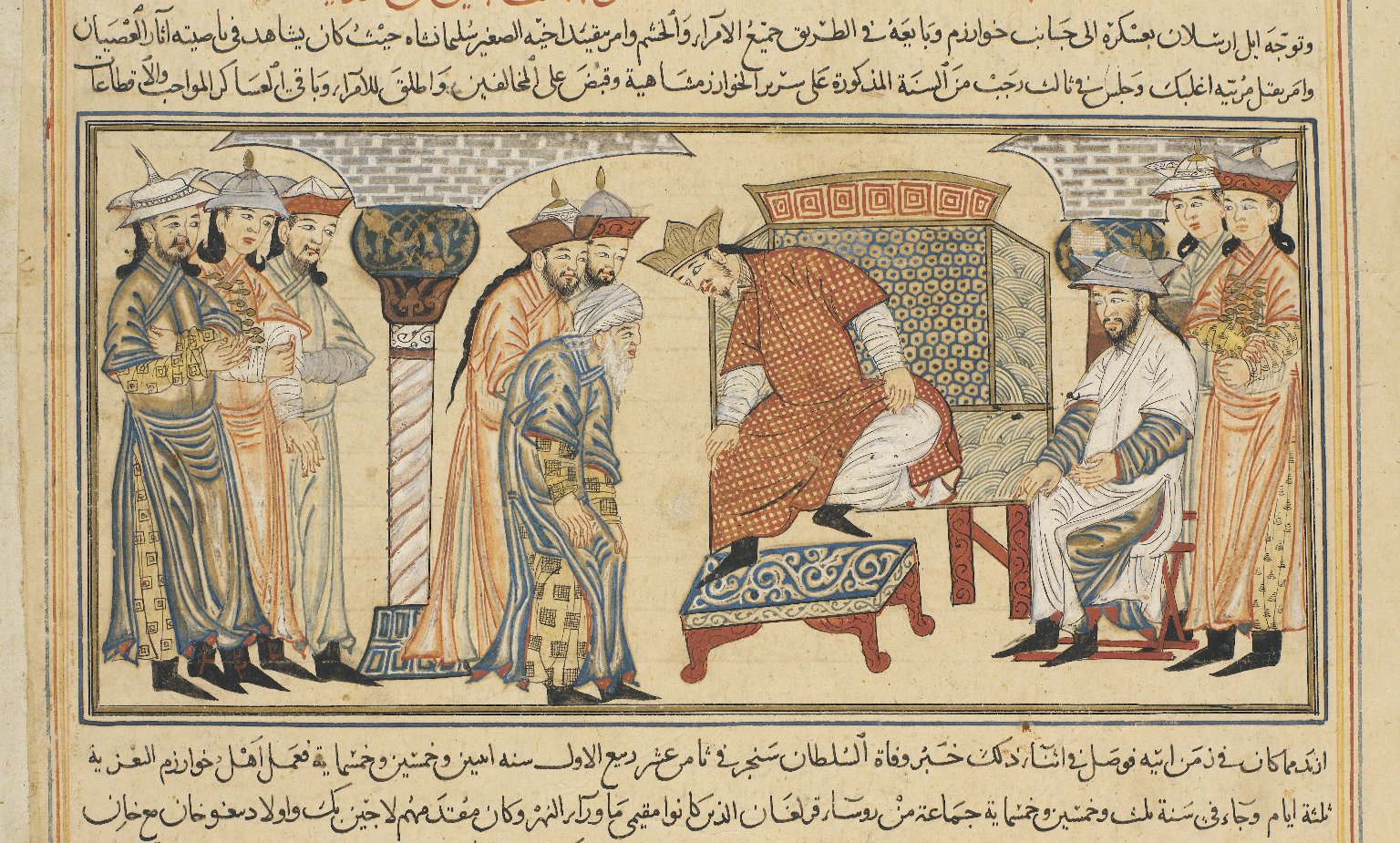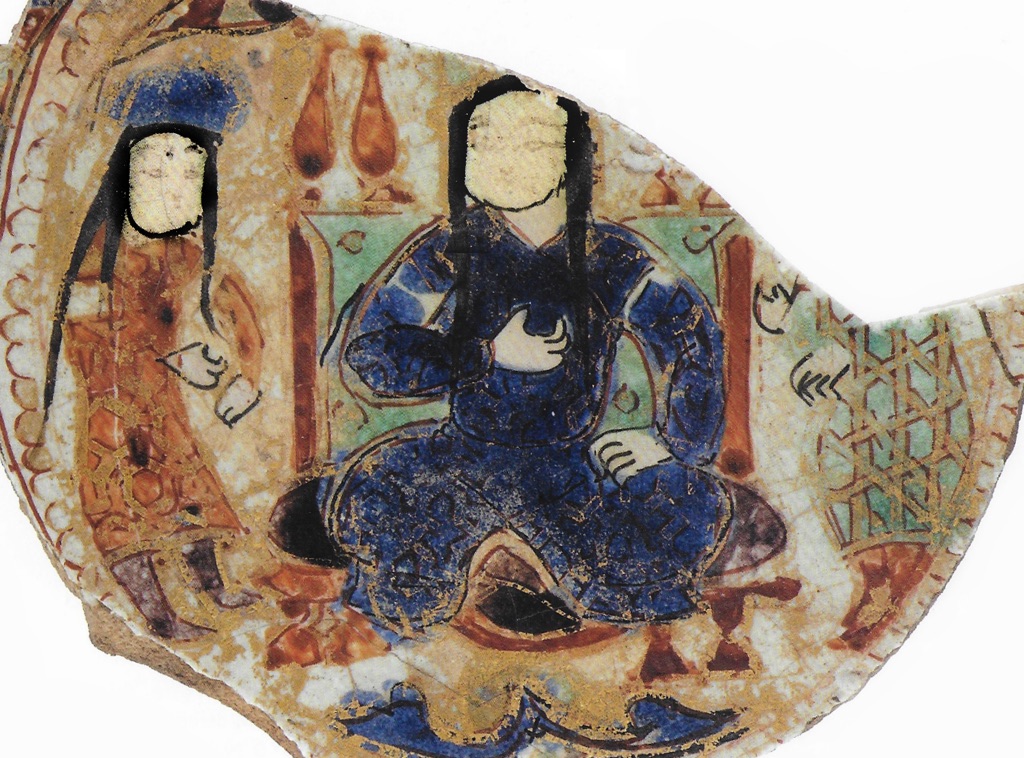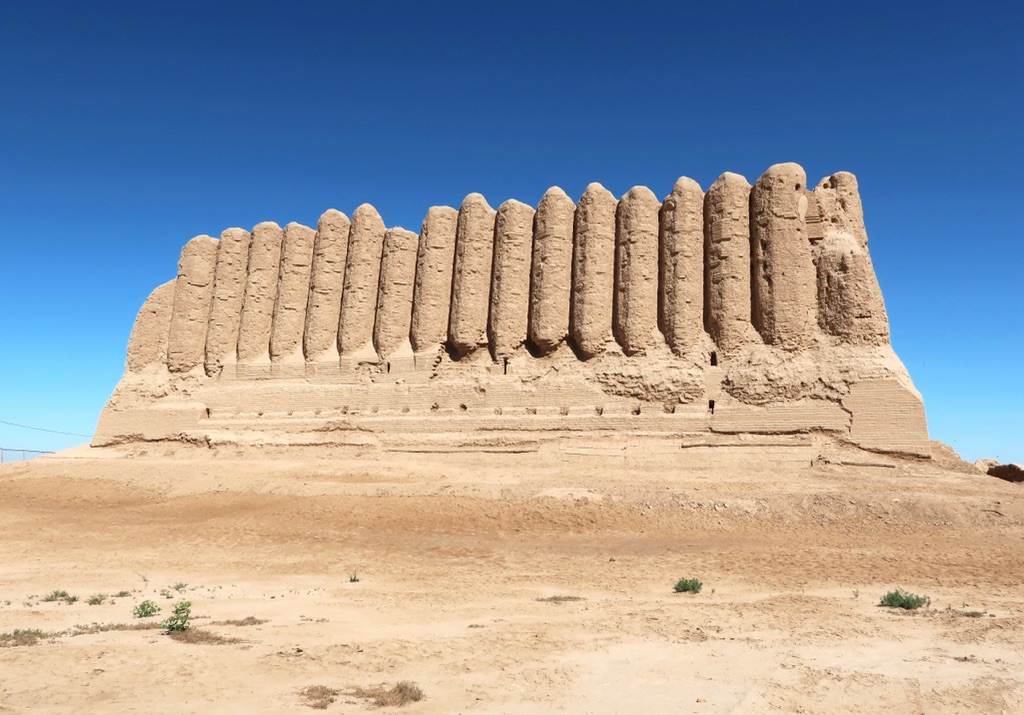Great Kyz Kala stands as a testament to the architectural ingenuity of the ancient Merv. Nestled in present-day Turkmenistan, this historic site captivates visitors with its distinctive corrugated walls. Thought to date back to the 8th or 9th century, the structure is part of the larger historical landscape of Merv. Once a major oasis city along the Silk Road, Merv played a significant role in the exchange of culture, goods, and ideas. Great Kyz Kala, with its unique design and enduring materials, provides a fascinating glimpse into the past. The Kyz Kala complex has garnered attention for its historical and cultural significance.
Khwarazmian Empire

The Khwarazmian Empire, flourishing between the 12th and 13th centuries, was a significant political and cultural power in the Islamic world, centered in the vast region of Khwarazm, near the Aral Sea, in what is now modern-day Uzbekistan and Turkmenistan. Its strategic location at the crossroads of major trade routes, including the Silk Road, facilitated not only economic prosperity but also a rich exchange of cultures, ideas, and technologies. The empire’s origins can be traced back to the early 11th century when it was a part of the Seljuk Empire, but it gained significant autonomy and prominence under the rule of the Anushtegin dynasty starting in the late 12th century.
Under the leadership of Ala ad-Din Tekish, the Khwarazmian Empire expanded its territories to include much of Iran and parts of Afghanistan and the Caucasus. This expansion was furthered by his son, Ala ad-Din Muhammad II, who brought the empire to its zenith, extending its influence from the Persian Gulf to the borders of the Kievan Rus’. The empire was known for its military prowess, facilitated by a well-organized army and the strategic use of fortifications along its borders. The Khwarazmians were also adept at diplomacy, maintaining complex relationships with neighboring powers such as the Caliphate in Baghdad, the Byzantine Empire, and the Mongol Empire.
The cultural and scientific achievements of the Khwarazmian Empire were remarkable. It was a melting pot of Persian, Islamic, and Turkic cultures, which fostered a vibrant intellectual atmosphere. Scholars in the empire made significant contributions to fields such as mathematics, astronomy, medicine, and philosophy. The city of Gurganj, the empire’s capital, was a renowned center of learning, attracting scholars from across the Islamic world. The architectural legacy of the Khwarazmians, characterized by grand mosques, madrasas, and mausoleums, showcased the empire’s artistic and engineering prowess.

However, the Khwarazmian Empire’s prosperity and expansion attracted the attention of the Mongol Empire under Genghis Khan. In 1219, following a series of diplomatic misunderstandings and provocations, the Mongols launched a devastating invasion against Khwarazm. The Mongol armies, known for their ruthless efficiency, laid waste to cities, including the capital Gurganj, and massacred vast numbers of people. This invasion marked the beginning of the end for the Khwarazmian Empire, leading to its rapid decline and eventual disintegration by the mid-13th century.
Despite the empire’s collapse, the legacy of the Khwarazmian Empire lived on in various forms. Survivors of the Mongol onslaught fled westward, spreading their knowledge and culture across the Islamic world and into Europe. This diaspora played a significant role in the transmission of Eastern knowledge to the West, particularly during the Renaissance. Moreover, the Mongol conquest of Khwarazm served as a catalyst for the further expansion of the Mongol Empire, shaping the course of Eurasian history for centuries to come.
In conclusion, the Khwarazmian Empire was a beacon of cultural, scientific, and military achievement in the medieval Islamic world. Its rise and fall are a testament to the dynamism of history, marked by periods of remarkable prosperity and devastating calamity. The empire’s contributions to culture and science, as well as its role in facilitating the exchange of knowledge between East and West, underscore its significant place in world history. Despite its eventual destruction, the legacy of the Khwarazmian Empire continues to influence modern culture and knowledge.

